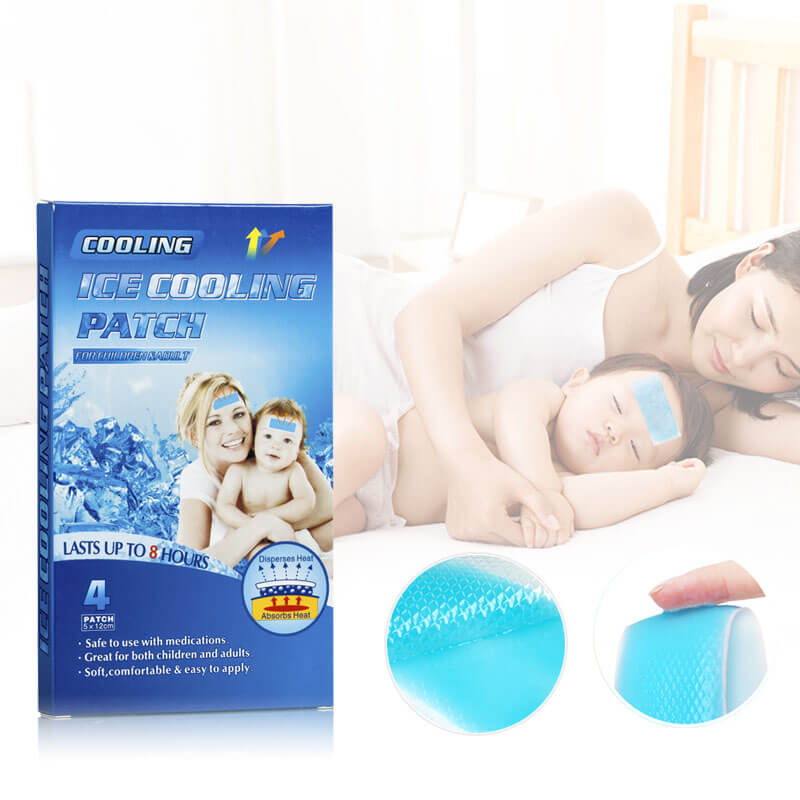Author:Kangdi 31-08-2024
The production of cooling gel patches is a sophisticated process that combines advanced technology with pharmaceutical-grade precision. This article delves into the intricate world of cooling gel patch factories and manufacturers, exploring the complexities of production and the key factors that drive success in this innovative industry.
01. The Modern Cooling Gel Patch Factory
Today's cooling gel patch factories are state-of-the-art facilities that integrate various specialized areas:
Research Laboratories: Where new cooling formulations are developed and tested.
Clean Rooms: Sterile environments for handling active ingredients and patch assembly.
Production Lines: Automated systems for gel mixing, patch creation, and packaging.
Quality Control Centers: For rigorous testing of materials and finished products.
Climate-Controlled Storage: For raw materials and finished goods to maintain efficacy.
02. Key Stages in Cooling Gel Patch Manufacturing
1. Raw Material Sourcing and Testing
The process begins with sourcing high-quality ingredients, including cooling agents (e.g., menthol, mint extracts) and patch materials (adhesives, backing layers). Each component undergoes strict quality checks to ensure purity and efficacy.
2. Gel Formulation
Chemists and pharmacologists collaborate to create the patch's cooling gel formula. This involves precise calculations to determine the optimal concentration of ingredients for effective cooling and skin compatibility.
3. Patch Design and Engineering
Engineers design the patch structure, focusing on factors such as:
Adhesive strength for secure application
Breathability to prevent skin irritation
Backing material to protect the gel and clothing
4. Gel Production and Application
The cooling gel is produced in large batches using specialized mixing equipment. It is then carefully applied to the patch material using precision machinery to ensure even distribution.
5. Patch Cutting and Assembly
Large sheets of the gel-infused material are precision-cut into individual patches. This process often utilizes advanced cutting technology for accuracy and consistency.
6. Packaging
Patches are sealed in individual pouches to maintain gel integrity and prevent contamination. Packaging often includes moisture-resistant materials to extend shelf life.
7. Quality Control and Testing
Throughout the manufacturing process, samples undergo rigorous testing, including:
Cooling efficacy tests
Adhesion strength assessments
Skin sensitivity studies
Stability testing under various conditions
03. Challenges Faced by Cooling Gel Patch Manufacturers
Producing high-quality cooling gel patches presents several unique challenges:
Temperature Sensitivity: Maintaining gel stability during production and storage.
Consistency: Ensuring uniform cooling effect across all patches.
Adhesive Performance: Balancing strong adhesion with comfortable removal.
Regulatory Compliance: Meeting diverse international standards for topical products.
Innovation: Continuously improving cooling technology and patch design.
04. The Role of Technology in Cooling Gel Patch Manufacturing
Advancements in technology play a crucial role in improving cooling gel patch production:
Thermal Imaging: Ensuring even distribution of cooling agents.
Automated Quality Control: Using AI and machine vision for defect detection.
Advanced Mixing Technology: Creating more stable and effective gel formulations.
IoT Sensors: Monitoring production conditions in real-time for optimal quality.
05. Sustainability in Cooling Gel Patch Production
As environmental concerns grow, manufacturers are focusing on sustainable practices:
Developing eco-friendly cooling agents
Implementing energy-efficient production processes
Reducing packaging waste
Sourcing biodegradable materials for patch components
06. The Future of Cooling Gel Patch Manufacturing
The cooling gel patch industry is poised for continued growth and innovation. Manufacturers are likely to focus on:
Smart patches with temperature-responsive technology
Extended cooling duration through advanced gel formulations
Customizable cooling intensities for different applications
Integration with other therapeutic elements (e.g., pain relief, aromatherapy)
07. Conclusion
The manufacturing of cooling gel patches is a complex process that requires expertise in chemistry, materials science, and advanced manufacturing techniques. As consumer demand for these innovative cooling solutions grows, manufacturers will continue to play a pivotal role in driving advancements in the field. Their ability to overcome challenges, embrace new technologies, and meet evolving regulatory standards will be crucial in shaping the future of the cooling gel patch industry. The ongoing collaboration between research teams, engineers, and quality control experts within these factories ensures that consumers receive safe, effective, and innovative cooling gel patches that meet their diverse needs.
 0086 19937104978
0086 19937104978





